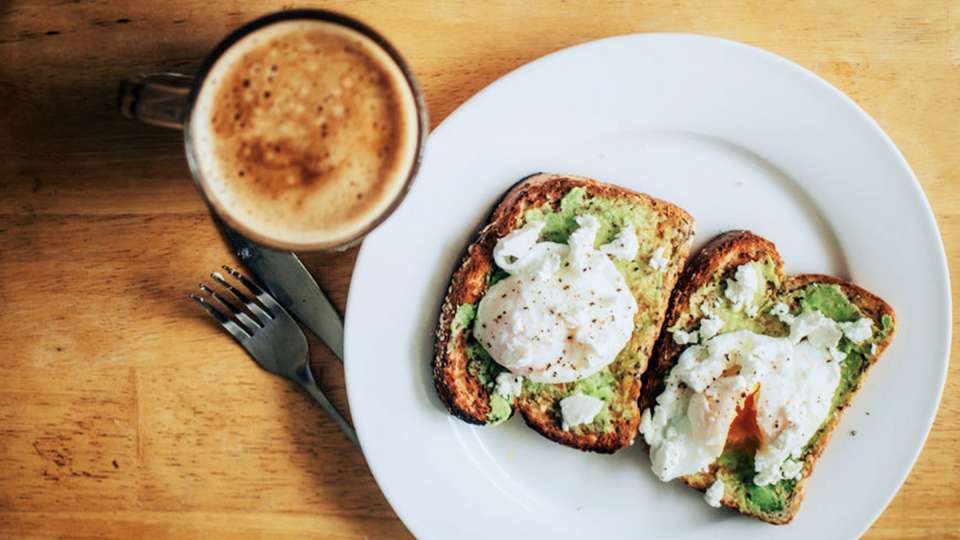
What’s not to love about avocados? They’re healthy, packing a ton of nutrients and vitamins like copper, folate and vitamin K, plus good-for-you fats. They’re versatile: Whether they’re livening up a piece of toast or making up your favorite guacamole, avocados are easy to incorporate into just about any dish. And they carry an intriguing mystique: Are they a fruit? A vegetable? (Spoiler alert: They’re actually a fruit.)
In short, avocados are great. (Just ask millennials.) But they’re also, er, finicky.
You know the drill. You spend too much time in the grocery store selecting the perfect avos, carefully carry them home so they don’t bruise and wait for that glorious day when they ripen enough to grace you with their deliciousness.
Then, the unthinkable happens: That avocado you thought was perfectly ripe is actually rotten, much like your dream of eating the perfect piece of avocado toast for lunch that day. How pitiful.
Avocados may have a reputation for being high maintenance, but it doesn’t have to be that way.
For guidance on how to solve our avocado woes, we consulted Judy Simon, M.S., R.D., a dietitian who sees patients at the Nutrition Clinic at University of Washington Medical Center-Roosevelt. She’s also an avocado toast aficionado.
“Personally, I like mine with an egg,” she says.
A little goes a long way
First, a reminder: Avocados are full of fat. Yes, it’s the healthy kind, but you don’t need to eat a lot of avocado in one sitting to reap health benefits.
If you were to eat an entire avocado in one day (which is a lot of avocado, tbh) that would account for about half of the fat that you need in the day, says Simon.
“It’s sort of like nuts; we don’t realize it’s a dense source of energy,” Simon says.
Wash before you slice
This is a crucial step that not a lot of people know to do. Before slicing an avocado, rinse it off thoroughly. Why? So any germs on the outside of the avocado skin don’t get transferred to the inside (aka the part you eat) via your knife.
“Listeria and salmonella bacteria can live on the skin, and when you cut the knife through the skin, that bacteria can now enter the flesh that we are going to eat,” Simon says.
How to check an avocado for ripeness
Can’t tell if your avocado is ripe yet? It’s a conundrum we all face.
Sometimes it’s obvious, like when the avocado is super soft. If that’s not the case, Simon has an easy tip for how to find out if your avocado is ready to eat: pull off the stem nub at the top and check to see what color the avocado is inside.
If it looks mostly green, it’s not quite ripe yet; if it’s yellow, you’re good to go. And if it’s brown … sorry to break it to you, but you probably don’t want to eat it.
How to store avocados
Here are Simon’s tips for storing avocados in a way that prevents them from over-ripening or spoiling.
- Keep the pit in. This helps prevent air from getting to unexposed parts of the avocado.
- Drizzle on some lemon or lime juice. The ascorbic acid (vitamin C) in the juice will help prevent oxidation, which is what happens when your avocados turn brown.
- Keep avocado halves covered. You can use a paper bag, a reusable container, a piece of foil or one of those fancy avocado huggers you see at the grocery store. The goal is to create a tight seal over the exposed parts of the avocado and prevent air from getting to it.
- Store ripe avocados in the fridge, unripe ones on the counter. If an avocado is already soft and darker in color, it probably means it’s ripe; if you’re not ready to eat it yet, stick it in the fridge to preserve it for a few days and delay additional ripening. If your avocados are still green and hard, keep them at room temperature on the counter until they soften.

 Healthy ideas for your inbox
Healthy ideas for your inbox





